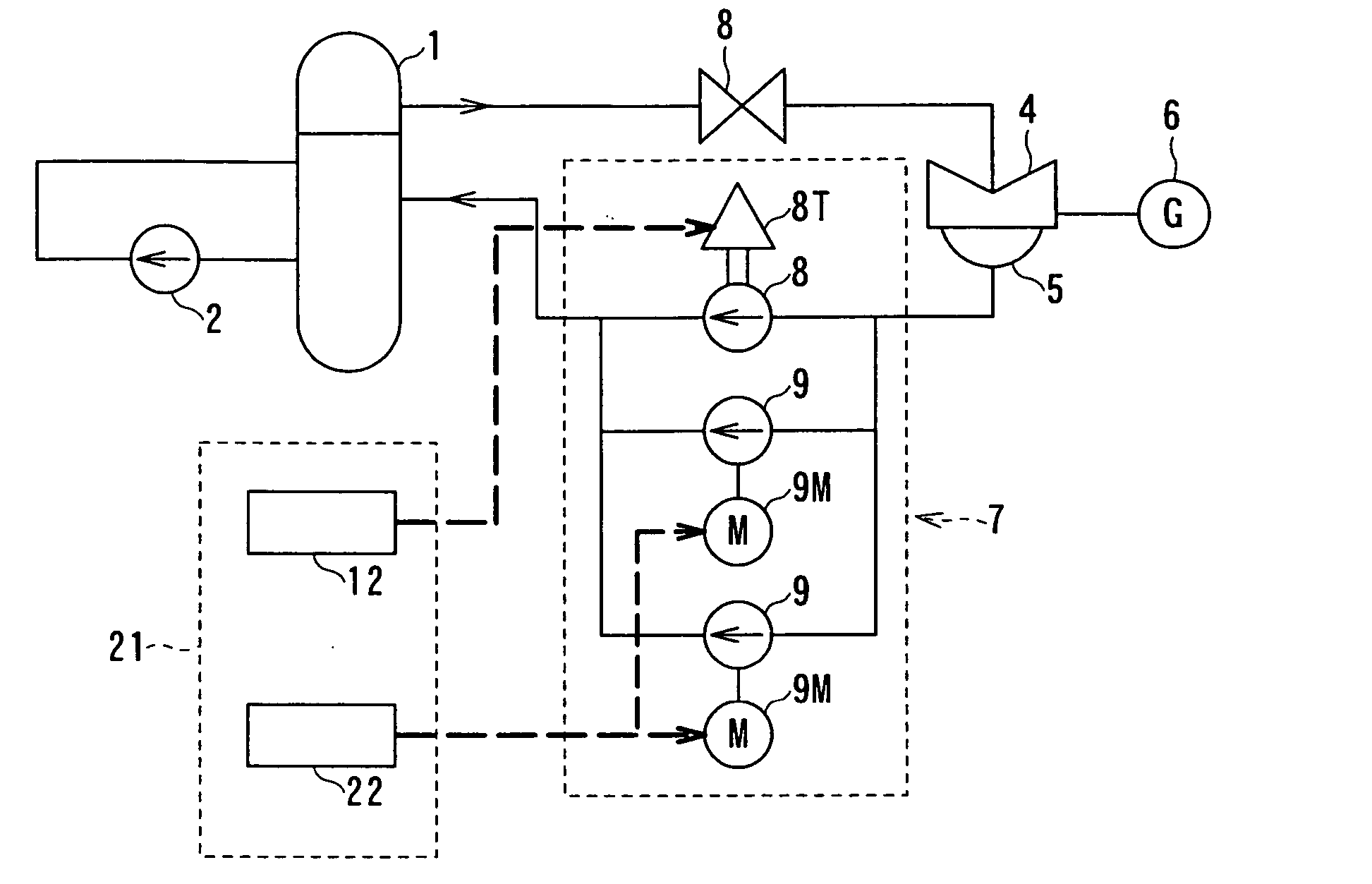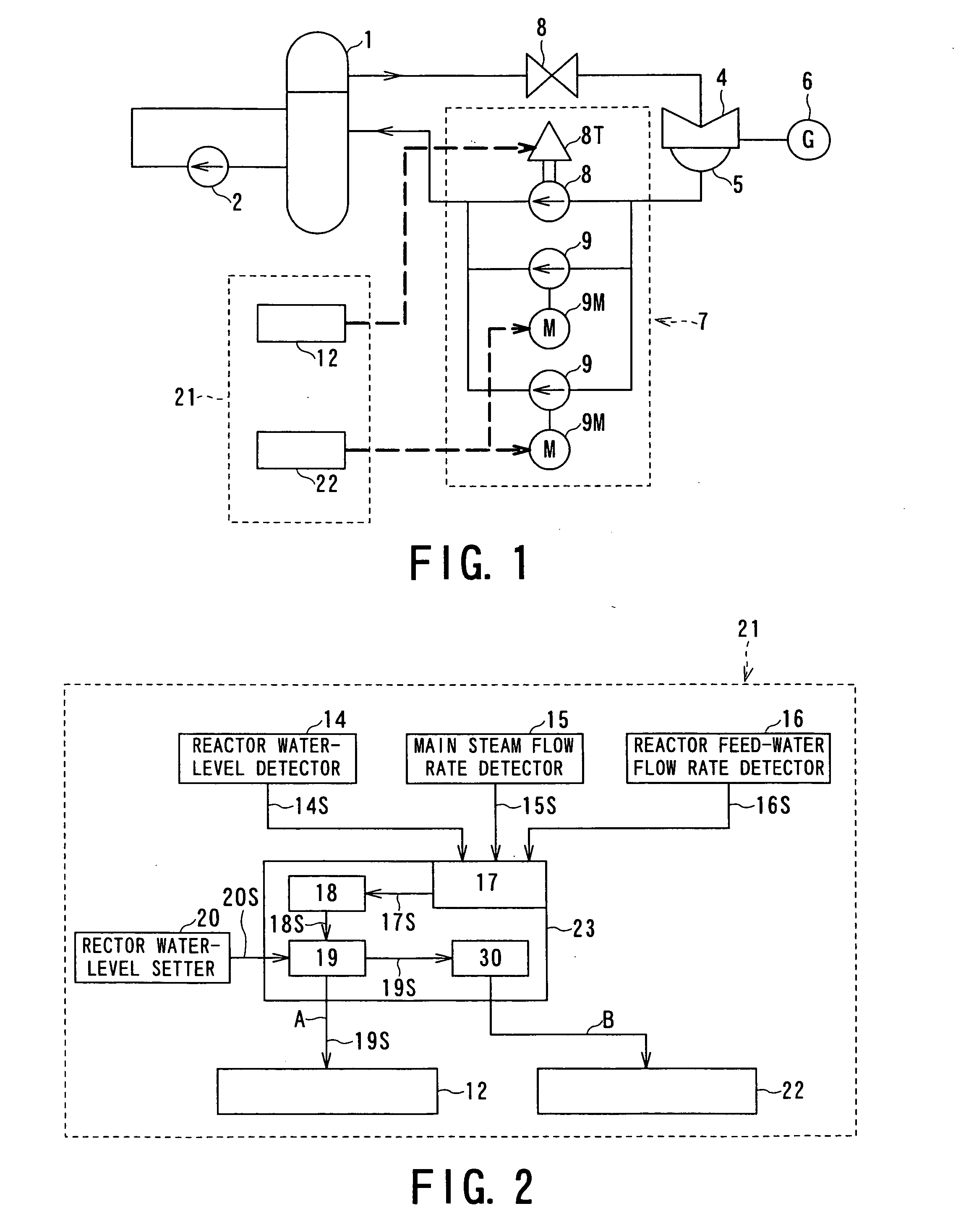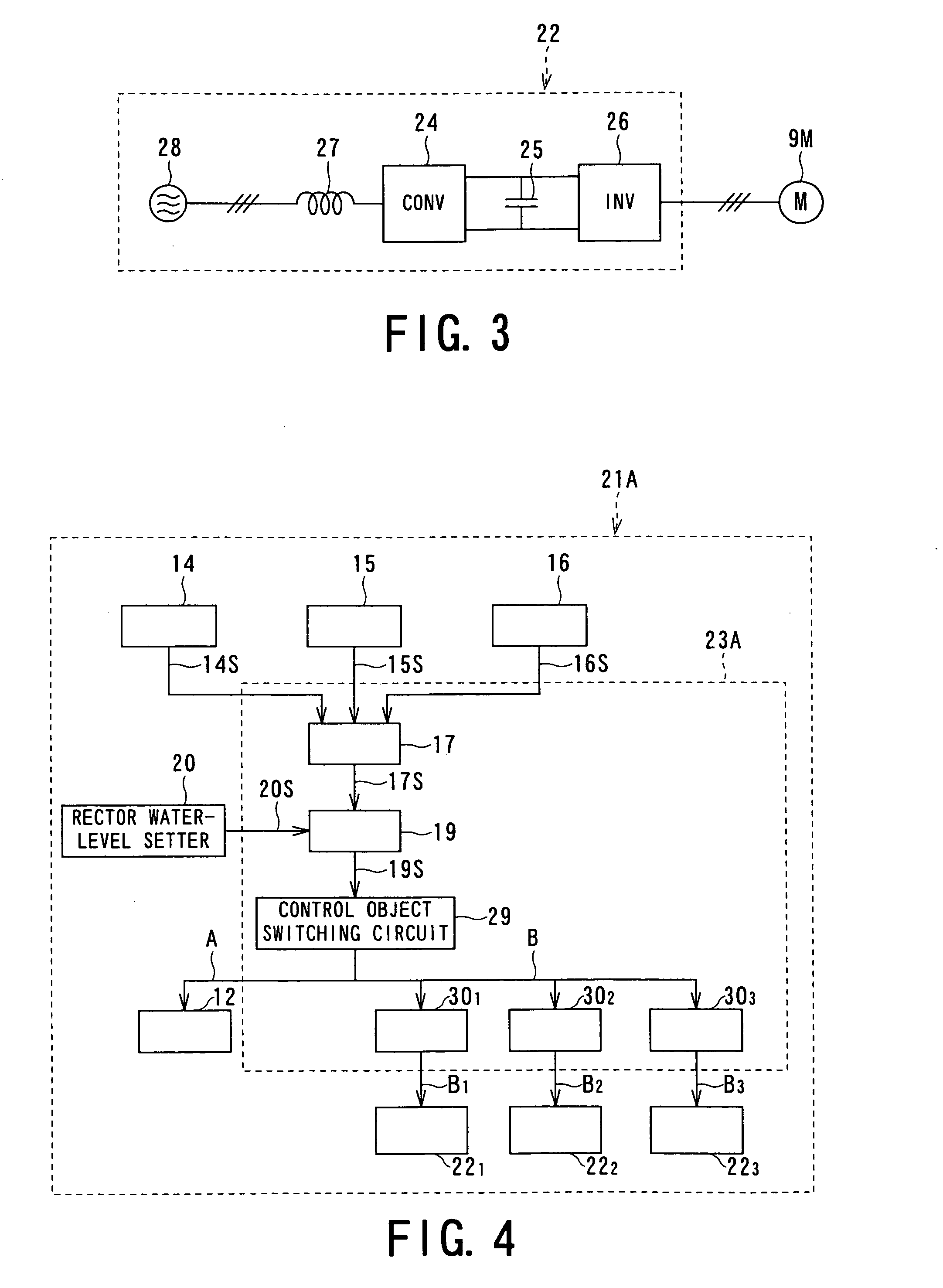Nuclear reactor feed-water system
a technology of nuclear reactors and feedwater, which is applied in the direction of water feed control, greenhouse gas reduction, nuclear elements, etc., can solve the problems of not obtaining predetermined reactor water levels, difficult to maintain set water levels, and difficulty in maintaining a suitable set water level of reactor water, so as to maintain a stable reactor water level and suppress power consumption
- Summary
- Abstract
- Description
- Claims
- Application Information
AI Technical Summary
Benefits of technology
Problems solved by technology
Method used
Image
Examples
first embodiment
[0047] A reactor feed-water system according to the first embodiment will be described with reference to FIGS. 1 to 3.
[0048] The nuclear reactor feed-water system of this first embodiment basically differs from the conventional technology mentioned hereinbefore in the point that the feed-water pump drive motor 9M is driven by a semiconductor power conversion apparatus, for generating variable frequency and variable voltage, in place of the reactor feed-water regulation valve 10 in the conventional structure.
[0049] With reference to FIG. 1, a reactor feed-water pump control unit 21 is newly disposed in place of the conventional reactor feed-water pump control unit 11, and a semiconductor power conversion circuit 22 including an inverter is also disposed in place of the feed-water regulation valve control circuit 13 so as to make variable the output frequency and output voltage by a trigger signal given to a switching device constituting the inverter. The details of such semiconduct...
second embodiment
[0059]FIG. 4 shows a block diagram representing the nuclear reactor feed-water pump control unit according to the second embodiment of the present invention.
[0060] The embodiment relates to the nuclear reactor feed-water pump control unit provided with a plurality of objects to be controlled (three, for example), and a control object switching circuit is additionally disposed in the control-operation circuit 23A, which is operated as a master control unit to carry out total control without disposed a plurality of units corresponding to the motor drive feed-water pumps 9. Further, in this and following embodiments, the three-function / single-function change-over switch is eliminated for the sake of easy explanation.
[0061] With reference to FIG. 4, reference numeral 21A denotes a nuclear reactor feed-water pump control unit, and reference numeral 29 denotes a control object switching circuit acting to select the motor driven feed-water pump 9 or turbine drive feed-water pump speed co...
third embodiment
[0069]FIG. 5 shows a block diagram representing the nuclear reactor feed-water pump control unit according to the third embodiment of the present invention.
[0070] With reference to FIG. 5, reference numeral 21B denotes a nuclear reactor feed-water pump control unit according to this third embodiment, in which the turbine drive feed-water pump speed control circuit 12 is eliminated. In the third embodiment, a by-pass conduit or line 32 provided with a by-pass valve 31 is connected between the inlet side and the outlet side of the motor drive feed-water pump 9 in the reactor feed-water pump control unit in the above first or second embodiment. In the controlling of the feed-water drive motor 9M utilizing the semiconductor power conversion circuit 22, if it is difficult to ensure the minimal flow rate in a low speed area at the driving time, the by-pass valve 31 of the by-pass line 32 could be opened only in the area to achieve a certain degree of speed at the driving operation statin...
PUM
 Login to View More
Login to View More Abstract
Description
Claims
Application Information
 Login to View More
Login to View More - R&D
- Intellectual Property
- Life Sciences
- Materials
- Tech Scout
- Unparalleled Data Quality
- Higher Quality Content
- 60% Fewer Hallucinations
Browse by: Latest US Patents, China's latest patents, Technical Efficacy Thesaurus, Application Domain, Technology Topic, Popular Technical Reports.
© 2025 PatSnap. All rights reserved.Legal|Privacy policy|Modern Slavery Act Transparency Statement|Sitemap|About US| Contact US: help@patsnap.com



